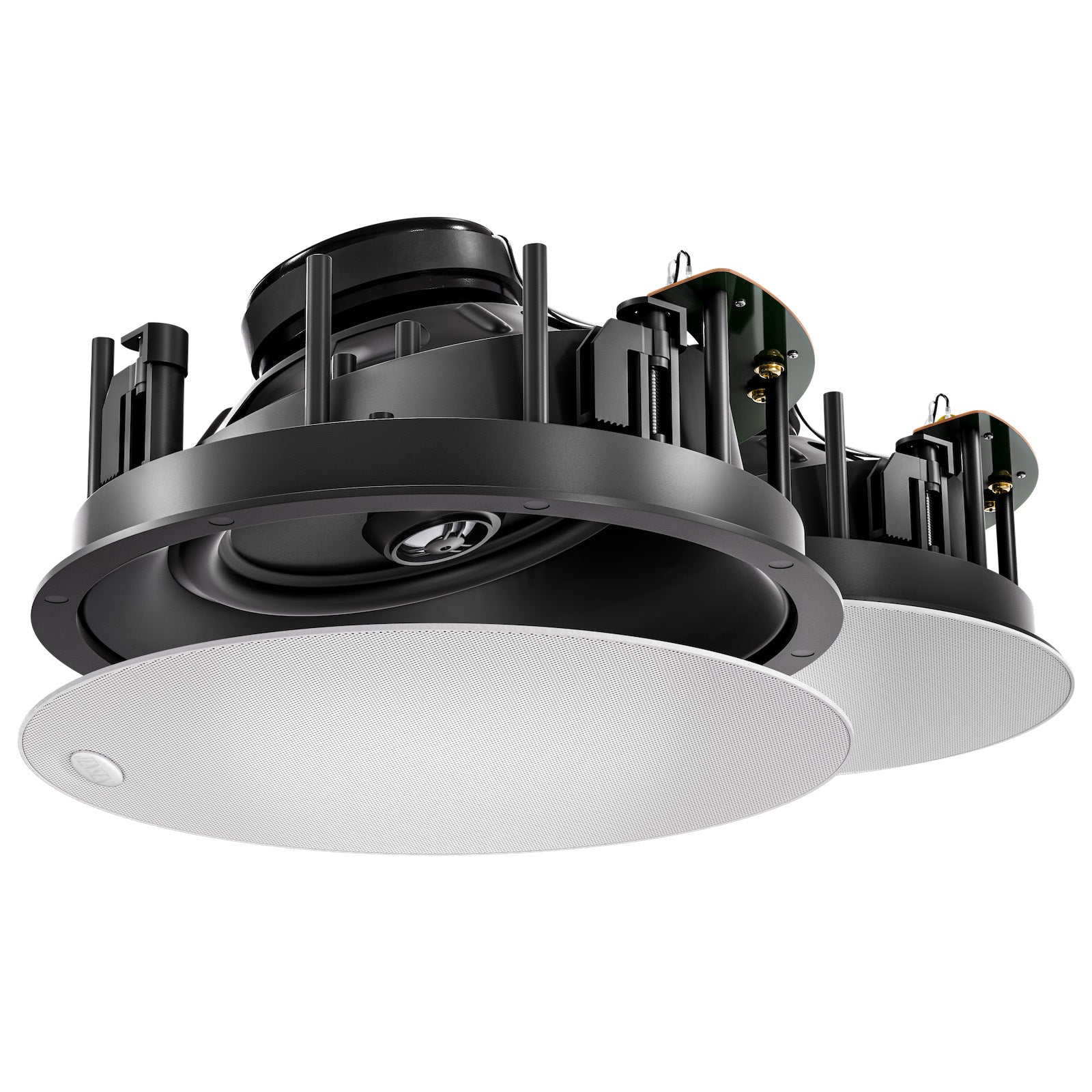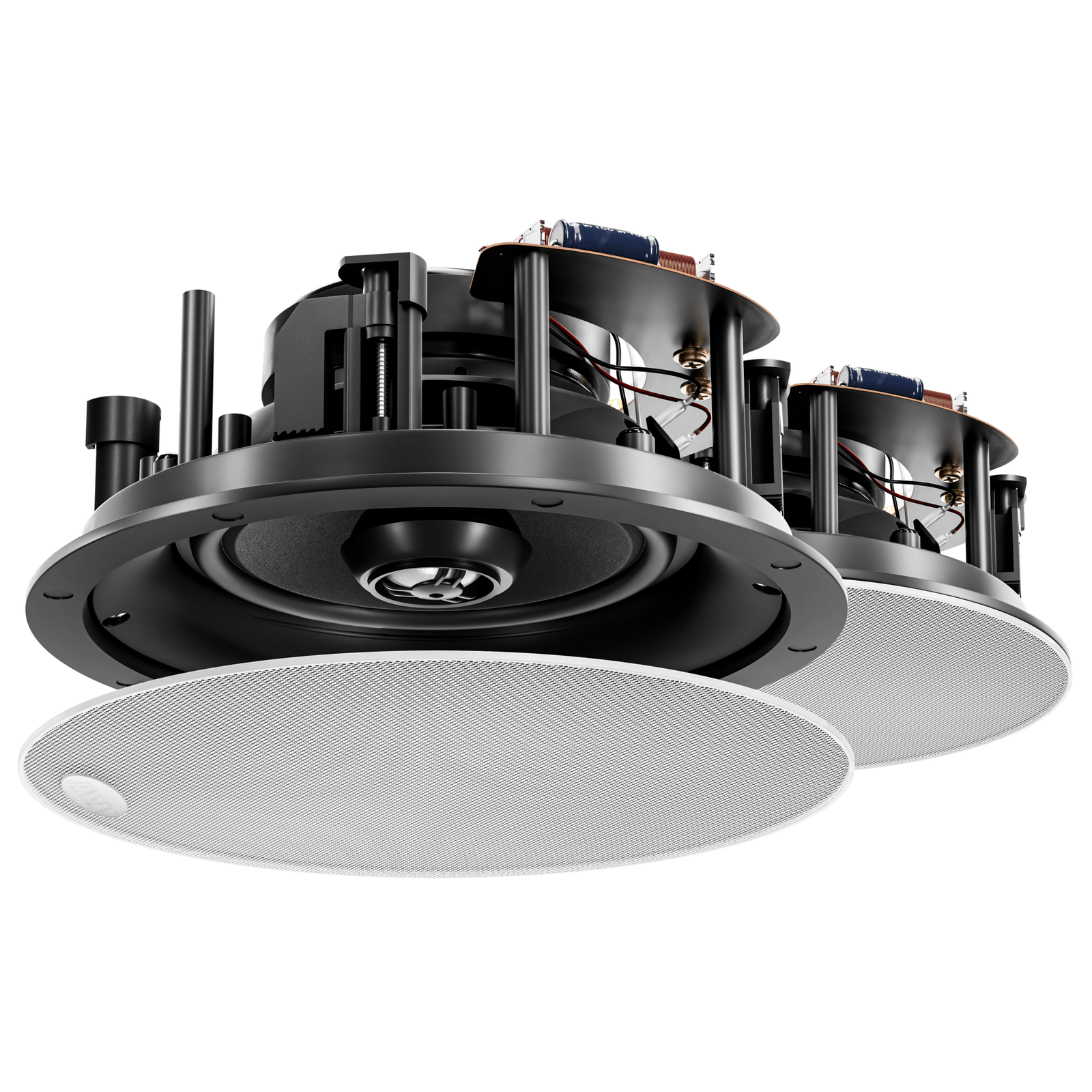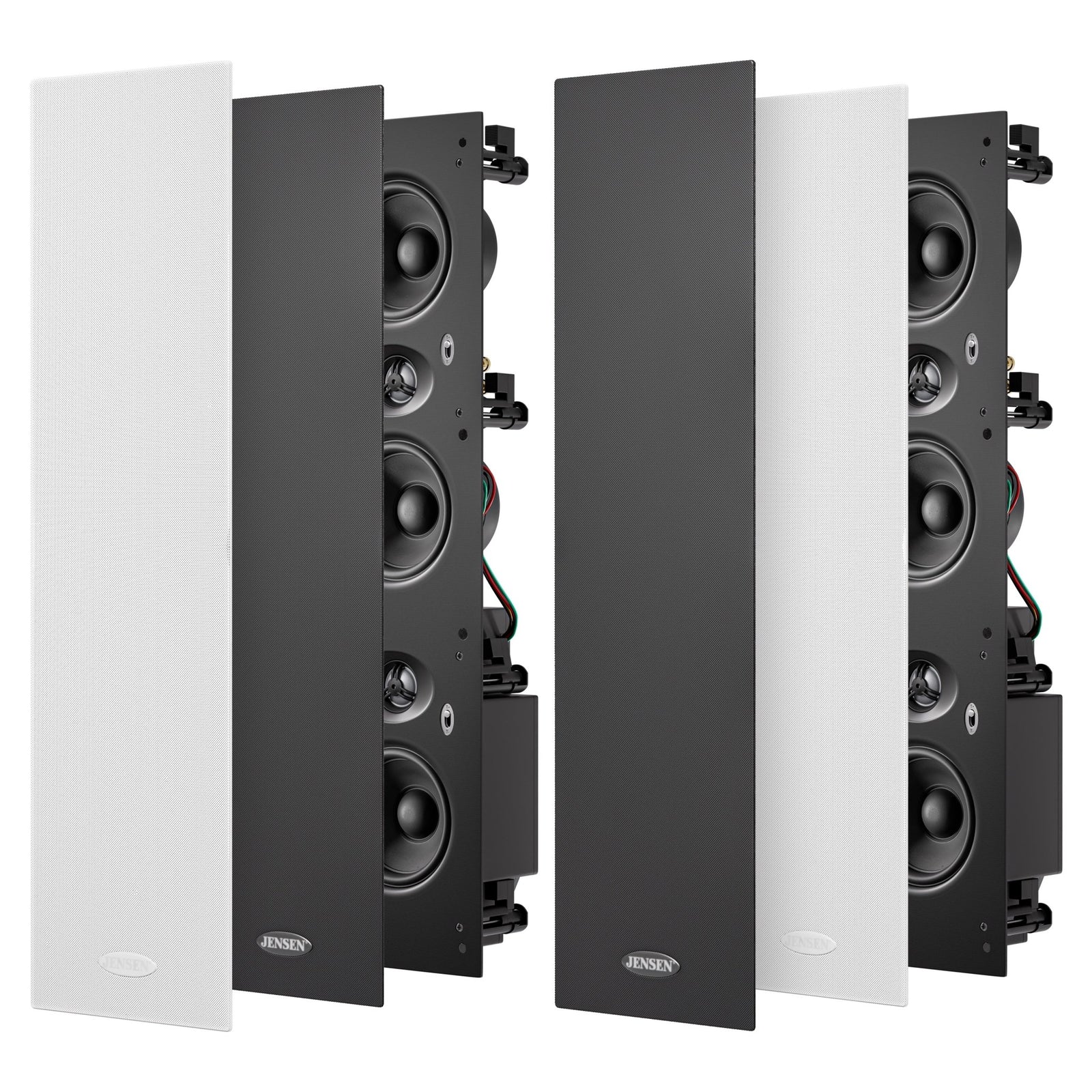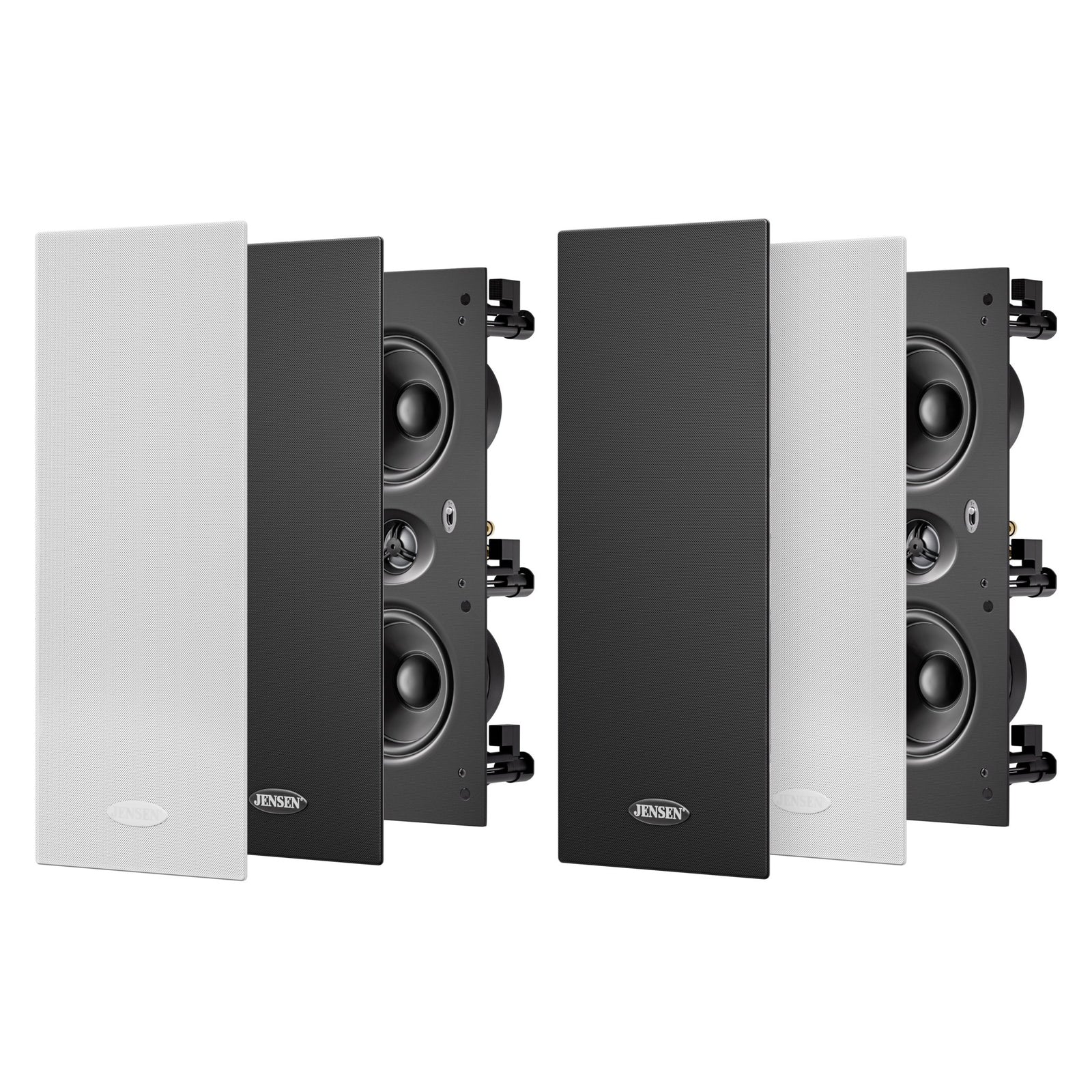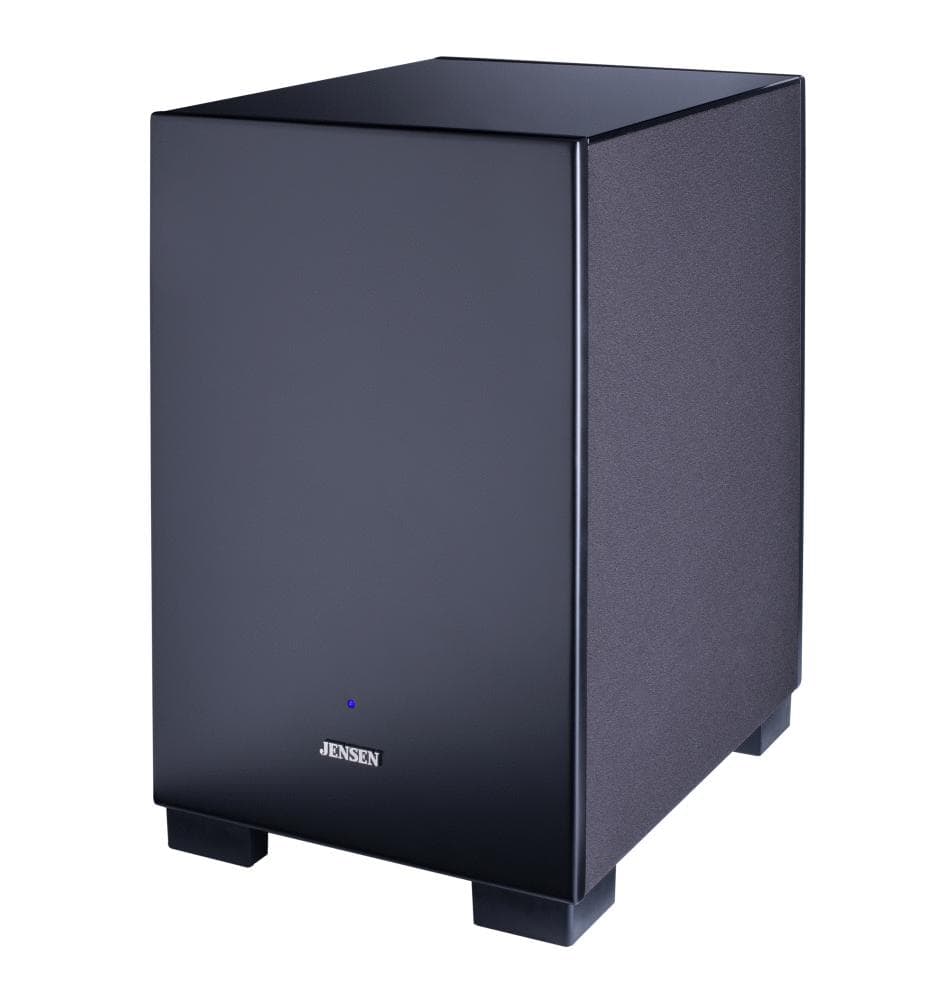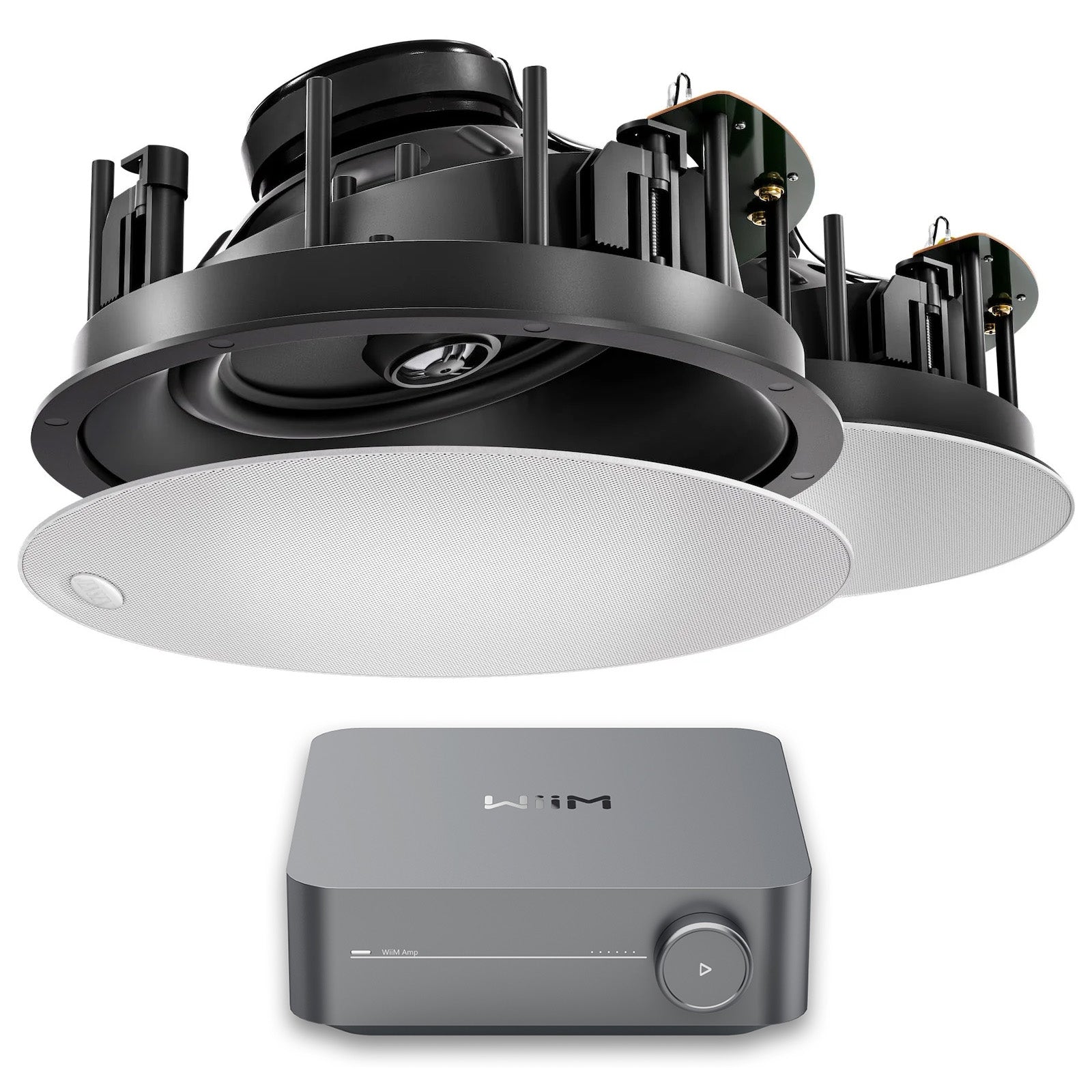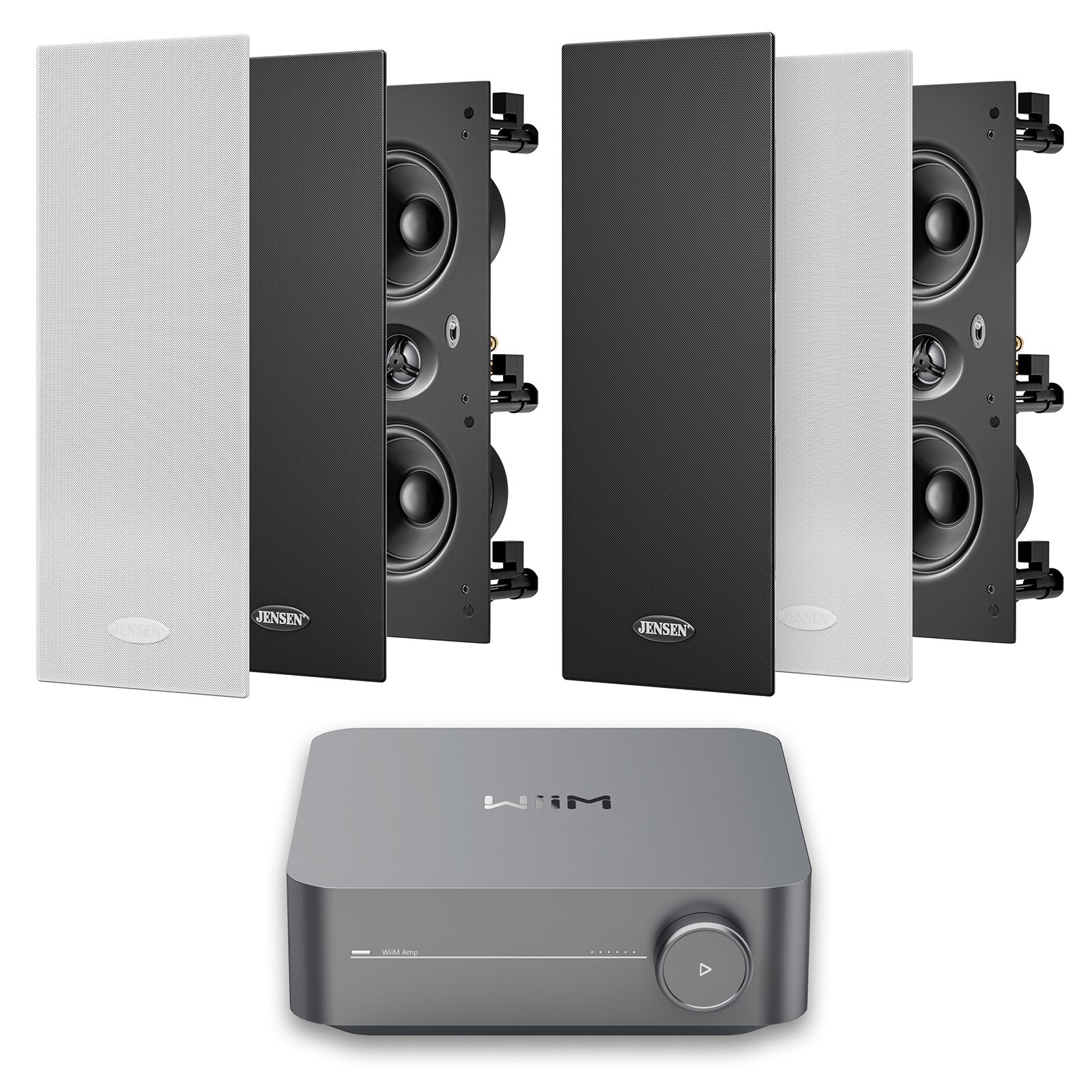I MOVED INTO A HOUSE WITH JENSEN SPEAKERS BUILT IN - HOW DO I GET THEM WORKING?

Do you have speakers built into your ceilings or walls that have been there since before you moved in?
If your home has built in speakers and you have no clue how to get them going, this article is the guide for you. I’m going to run through everything you need to consider and do to put those tidy built-in speakers to use.
It doesn’t matter what model the speakers are — this guide applies to any.
You will learn:
- How to understand what’s already there so you can hook it up.
- What decisions you have to make to get the system playing.
- Do you need an amplifier for existing in-ceiling speakers?
- How to make existing in-ceiling or in-wall speakers wireless.
If you don’t have speakers built into your home YET — and are planning to do so — check out The Best Audio System For Your New Home.
- The First Thing You Must Do With An Existing Speaker System
- How To Get In-ceiling Speakers To Work
- How To Make Existing In-ceiling Speakers Wireless
The First Thing You Must Do With An Existing Speaker System

If you bought a house with built in speakers already, the critical first thing you need to do is assess what you have.
The questions you need to ask
- How many different zones / rooms / areas are there on the property?
- How many speakers are there in each zone?
- Where are the existing speaker cables ending up?
Write out each separate zone (lounge, alfresco, master bedroom, etc.) and next to that write how many speakers are in that zone.
Then you need to work out where the speaker cables from each speaker are ending up. There could be a wall plate with four or more speaker terminals (click here for example). Or bare wires hanging somewhere, like a space that makes sense for a TV or a utility cabinet. This is where you’ll connect an amplifier to power your speakers.

Once you figure out where the terminals / cables are, try to identify if there are the same number of pairs of speaker cable as there are speakers on the property. (They may not be labeled.)
How to tell if in-ceiling speakers work (without an amp!)
If you’re just taking notice of existing in-ceiling or in-wall speakers and there’s no amplifier on the property — you want to check if they even work before you go out of your way to buy an amp.
What you need is a typical AA battery (and maybe a bit of copper wire).
It could be any DC battery technically. But AA is common and effective.
Wherever the cables terminate (explained above), bring the battery there. If you have bare speaker wire exposed, this will be easy. Simply grab a pair of wire and hold each end of the wire to each end of the battery. (It won’t shock you.)
If you DON’T have bare wire, but terminals, then you’ll need to connect copper wire to each terminal first. Then touch the ends as above.
What happens is the voltage of the battery causes the speaker to jump for a split second. You MAY be able to hear it from where you are… but you may need a second person to listen.
The goal is to (1) make sure each speaker works and (2) label the speaker cable ends so you know which pair goes to which speaker, in which zone.
Once you have the zones and cable ends figured out, you’re ready to get the system running.
How To Get In-ceiling Or In-wall Speakers To Work

You should know how many zones you have, how many speakers per zone, and where all the cables end up.
Assuming the speakers that came with the house are NOT wireless (extremely unlikely), all you need to do is get a suitable amplifier and set it up.
If you want a main area to play TV sound and / or surround sound, get an AV receiver.
A 5 channel receiverwill power that room only.
Any 7 channel AV receiver should give you “zone 2” power as well — so you can run 5 speakers in the main zone and 2 speakers in another zone.
A high-end 9 channel receiver will give you yet another 2 speaker zone.
The Denon receivers can be purchased here.
The most common (and simple) multi-zone system we recommend is a “theatre + zone two” system, using a 7 channel receiver. (Click here to read more.)
Note that most modern AV receivers give you Bluetooth and WiFi connectivity as well.
If you only want background music for two speakers, you can get any stereo amplifier instead. (You may need to check for Bluetooth or WiFi connectivity.)
We recommend the Denon HEOS Amp for any 2 speaker zones.
Note: We supply package deals on Denon receivers with our performance in-wall or in-ceiling speakerson request.
If you’re interested, get in touch here.
How To Make Existing In-ceiling Or In-wall Speakers Wireless

In-ceiling and in-wall speakers are almost always passive speakers. They need an amplifier to play — so they won’t have wireless built-in either.
Once you get an amplifier connected to them, there are two ways to make them wireless. (1) Use an amplifier with Bluetooth or WiFi built-in (like an AV receiver). Or (2) use a separate Bluetooth or WiFi streaming device and connect it to your amplifier.
The easiest option is to use an AV receiver. Most current AV receivers have both Bluetooth pairing and WiFi network streaming abilities. They also have app control that makes everything easier.
In general WiFi is better than Bluetooth. It’s more versatile and has better range.
